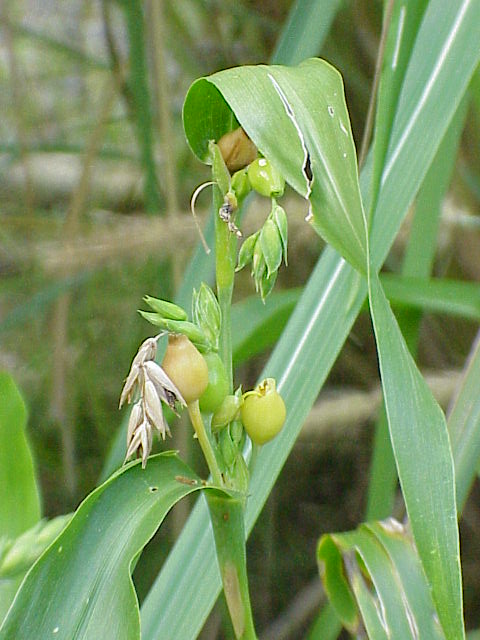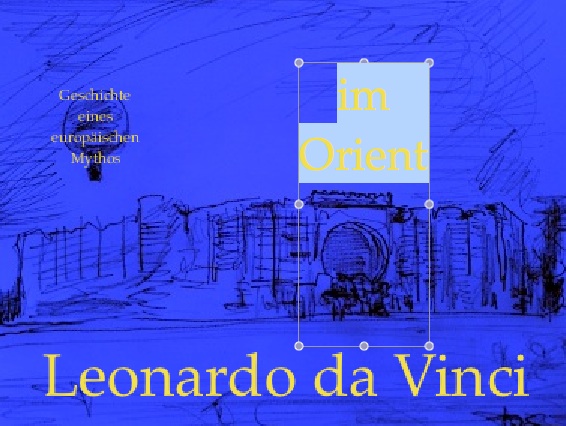M
I
C
R
O
S
T
O
R
Y
O
F
A
R
T
........................................................

NOW COMPLETED:

........................................................
MICROSTORY OF ART
ONLINE JOURNAL FOR ART, CONNOISSEURSHIP
AND CULTURAL JOURNALISM
........................................................
INDEX | PINBOARD | MICROSTORIES |
FEATURES | SPECIAL EDITIONS |
HISTORY AND THEORY OF ATTRIBUTION |
ETHNOGRAPHY OF CONNOISSEURSHIP |
SEARCH

........................................................



 >MICROSTORIES
>MICROSTORIES
- Richard Serra
- Martin Scorsese
- Claude Simon
- Sunshine
- Werner Herzog
- The Creation
- Marcel Duchamp
- Nino Rota
- Wölfflin and Woolf
- Hansjörg Schneider
- Kraftort Arkadien
- Visual Biography
- Schlaraffenleben
- Die Geisteswissenschaften
- The Voyeur
- Buzzword Sustainability
- Paul Verlaine
- Tao Yuanming
- New Beginning
- Seneca
- Still Lifes
- Charles Baudelaire
- Frédéric Chopin
- The Art History of Sustainability
- Wang Wei
- Solarpunk
- Historians of Light
- Lepanto
- Renaturalization
- Plates
- Snow in Provence
- Learning to See
- Picasso Dictionaries
- Peach Blossom Spring
- Picasso Tourism
- Tipping Points
- Sviatoslav Richter
- Weather Reports
- Treasure Hunt
- Another Snowscape in Picasso
- Picasso in 2023
- Dragon Veins
- The Gloomy Day
- The Art of the Pentimento
- Reforestation
- The Status of Painting
- Emergency Supply
- Punctuality
- Watching Traffic
- Zhong Kui
- How Painting Survived the 1990s
- Confirmation Bias
- Sustainability and Luxury
- Garage Bands
- Picasso and Artificial Intelligence
- Eyes of Tomorrow
- Picasso in 2023 2
- Gluing Oneself to Something
- Suburbia
- Bamboo
- Sustainability and Carpe Diem 1
- Interviews with Bruegel
- Sustainability and Carpe Diem 2
- Coffee & Sugar
- Bamboo 2
- Picasso in 2023 3
- Sustainability and Carpe Diem 3
- Cherry Orchard
- Old Magazines
- Chance
- Nick Drake
- Harlequin
- The Smartphone & the Art Book
- Atlas Syndrome
- The Kitchen
- Atlas Syndrome 2
- Consideration
- Tori Amos
- School
- Orchard Auctioning Day
- The Hundred Years’ War
- Sócrates
- Chameleon
- Nefertiti Bust
- Picasso as a Computer
- Sunflowers
- Philemon & Baucis
- Ode to the Radio
- Childhood
- Wimmelbild
- Restitution
- Nick Drake 2
- Wishful Thinking
- Sundays
- The Independent Scholar
- September
- The Fisherman by Pirosmani
- Microadventure
- Sociology
- Salvator Mundi
- Chillon
- Appassionata
- Amber
- Homer
- Berlin
- Planet Walk
- Improvisation
- Seeing Picasso
- These Nice Kids
- Robber
- The One
- The Sea Turtle
- Zoo
- Through the Hush
- Wunderkammer
- I Do Not Seek, I Find
- Shopping Mall
- Food Hamper
- The Secretary
- This Gate
- Nor Rainy Day
- House on a Hill
- Beautiful Island
- Second-hand Bookstore
- Flat
- Slap in the Face
- Serra, Wenkenpark
- Apologies
- The Bells
- Nordmann Fir
- Picasso Wanting To Be Poor
- Picasso, Pirosmani
- A Brief History of Sculpture
- 24 Sunsets
- Rusty Phoenix
- Glove
- Wintry Stanza
- A Song
- Like A Beatle
- Catching An Orange
- Solar Bees
- Permaculture

 >FEATURES
>FEATURES
- Van Gogh On Connoisseurship
- Two Museum’s Men
- Ende Pintrix and the City in Flames
- Titian, Leonardo and the Blue Hour
- The Man with the Golden Helmet: a documentation
- Un Jury d’admission à l’expertise
- Learning to See in Hitler’s Munich
- Leonardo da Vinci and Switzerland
- The Blue Hour Continued
- The Blue Hour in Louis Malle
- Kafka in the Blue Hour
- Blue Matisse
- Blue Hours of Hamburg and LA
- A Brief History of the Cranberry
- The Other Liberale in the House
- The Blue Hour in Raphael
- Who Did Invent the Blue Hour?
- Monet on Sustainability
- Velázquez and Sustainability
- The Blue Hour in Guillaume Apollinaire
- Van Gogh on Sustainability
- The Blue Hour in Marcel Proust
- Picasso and Sustainability
- The Contemporary Blue Hour
- The Blue Hour in 1492
- The Blue Hour in Hopper and Rothko
- Hopper and Sustainability
- The Blue Hour in Ecotopia
- The Hour Blue in Joan Mitchell
- Explaining the Twilight
- The Twilight of Thaw
- The Blue Hour in Pierre Bonnard
- Explaining the Twilight 2
- Picasso on Stalin
- Rubens on Sustainability
- The Salvator Mundi in Bruegel and Rubens
- The Blue Hour in Leonardo da Vinci and Poussin
- The Blue Hour in Rimbaud
- Faking the Dawn
- Frost and Thaw in Ilya Ehrenburg
- Picasso, Stalin, Beria
- Picasso, Solzhenitsyn and the Gulag
- Shostakovich on Picasso
- Hélène Parmelin in 1956
- Historians of Picasso Blue
- Picasso Travelling to Moscow 1
- The Blue Hour in Caravaggio
- Picasso Travelling to Moscow 2
- Picasso, the Knife Game and the Unsettling in Art
- Some Notes on Leonardo da Vinci and Slavery
- Picasso Moving to the Swiss Goldcoast
- The Blue Hour in Camus
- The Blue Hour in Symbolism and Surrealism
- Caspar David Friedrich in His Element
- Exhibiting the Northern Light
- Caspar David Friedrich in His Element 2
- Robert Schumann and the History of the Nocturne
- The Blue Hour in Robert Schumann
- Caspar David Friedrich and Sustainability
- The Twilight of Thaw 2
- Multicultural Twilight
- The Blue Hour in Anton Chekhov
- The Blue Hour in Medieval Art
- Twilight Photography
- The Blue Hour in Bob Dylan
- Iconography of Optimism

 >SPECIAL EDITIONS
>SPECIAL EDITIONS
- Visions of Cosmopolis
- Mona Lisa Landscapes
- Turner and Ruskin at Rheinfelden
- Painters On TV & On TV
- Spazzacamini in Art
- A Last Glance at Le Jardin de Daubigny
- The Experimental Cicerone
- A Dictionary of Imaginary Art Historical Works
- Iconography of Blogging
- Begegnung auf dem Münsterplatz
- Cecom
- Das Projekt Visual Apprenticeship
- Those Who See More
- A Fox on Seeing with the Heart
- Sammlung Werner Weisbach
- Daubigny Revisited
- Some Salvator Mundi Microstories
- Some Salvator Mundi Afterthougths
- Some Salvator Mundi Variations
- Some Salvator Mundi Revisions
- A Salvator Mundi Questionnaire
- A Salvator Mundi Puzzle
- Unknown Melzi
- Francis I and the Crown of Charlemagne
- From Amboise to Fontainebleau
- Drones Above Chambord
- Looking Back At Conques
- Flaubert At Fontainebleau
- Images of Imperial Ideology
- The Chronicles of Santa Maria delle Grazie
- Seeing Right Through Someone
- Melzi the Secretary
- Eying Glass
- A Foil to the Mona Lisa
- A Renaissance of the Cartoon
- Sketching a Family Tree
- Venetian Variations
- A Brief History of Digital Restoring
- A Consortium of Painters
- Leonardeschi and Landscape
- A Christ in Profile
- Learning to See in Spanish Milan
- A History of Gestures
- Leonardo and Josquin
- A Renaissance of the Hybrid
- Suida and Heydenreich
- The Watershed
- Three Veils
- From Beginning to End
- Connoisseurship of AI
- Twilight and Enlightenment
- The Blue Hour in Chinese Painting
- Dusk and Dawn at La Californie
- Iconography of Sustainability
- The Blue Hour in Goethe and Stendhal
- The Sky in Verlaine
- The Blue Hour in Paul Klee
- Iconography of Sustainability 2
- The Blue Hour in Charles Baudelaire
- From Bruegel to Solarpunk
- Some Salvator Mundi Documentaries
- Some More Salvator Mundi Monkey Business
- The Windsor Sleeve
- Brigitte Bardot’s Encounter with Picasso
- Art Historians and Historians
- A Salvator Mundi Chronicle
- The Salvator Mundi and the French Revolution
- The Fontainebleau Group
- The Encounter of Harry Truman with Pablo Picasso
- The Fontainebleau Group Continued
- The Windsor Sleeve Continued
- The Salvator Mundi in Early Netherlandish Painting 1
- Some Salvator Mundi Resources
- A New Salvator Mundi Questionnaire
- The Woman in Picasso
- The Yarborough Group
- Melzi, Figino and the Mona Lisa
- The Yarborough Group Continued
- A Salvator Mundi Global History
- The Salvator Mundi in Medieval Art
- The Salvator Mundi in Medieval Art 2
- The Salvator Mundi in Early Netherlandish Painting 2


 >HISTORY AND THEORY OF ATTRIBUTION
>HISTORY AND THEORY OF ATTRIBUTION
- The Mysterious »Donna Laura Minghetti-Leonardo«
- Assorted Demons of Connoisseurship
- Panofsky Meets Morelli
- Discovering the Eye of Sherlock Holmes
- Handling the Left-handed Hatchings Argument
- Visual History of Connoisseurship
- Alexander Perrig
- Connoisseurship in 2666
- What Postmodernity Has Done to Connoisseurship
- Dividing Four Fab Hands
- A Leonardesque Ambassador
- Test Cases in Connoisseurship
- A Raphael Expertise
- How to Tell Titian from Giorgione
- Louise Richter
- The Unique Property in the History of Connoisseurship
- An Expertise by Berenson
- The Book of Expertises
- An Album of Expertises
- An Expertise by Friedländer
- A Salvator Mundi Provenance
- How to Tell Leonardo from Luini
- An Expertise by Crowe and Cavalcaselle
- An Expertise by Bayersdorfer
- An Expertise by Hermann Voss
- An Expertise by Hofstede de Groot
- Leonardeschi Gold Rush
- An Unknown »Vermeer«
- An Expertise by Roberto Longhi
- An Expertise by Federico Zeri
- A Salvator Mundi Geography
- A Salvator Mundi Atlas
- The Bias of Superficiality
- 32 Ways of Looking at a Puzzle
- James Cahill versus Zhang Daqian
- Five Fallacies in Attribution
- On Why Art History Cannot Be Outsourced to Art Dealers
- On Why Artificial Intelligence Has No Place in Connoisseurship
- Salvator Mundi Scholarship in 2016
- Leonardo da Vinci at the Courts
- The Story of the Lost Axe
- The Last Bruegel
- A Titian Questionnaire
- On Where and Why the Salvator Mundi Authentication Did Fail
- The Problem of Deattribution

 >ETHNOGRAPHY OF CONNOISSEURSHIP
>ETHNOGRAPHY OF CONNOISSEURSHIP
MICROSTORY OF ART
ONLINE JOURNAL FOR ART, CONNOISSEURSHIP
AND CULTURAL JOURNALISM
........................................................

***
ARCHIVE AND FURTHER PROJECTS

1) PRINT


***
2) E-PRODUCTIONS


........................................................

........................................................

........................................................
FORTHCOMING:


***
3) VARIA

........................................................

........................................................

........................................................

........................................................

........................................................
***
THE GIOVANNI MORELLI MONOGRAPH

- The Giovanni Morelli Monograph
........................................................
MICROSTORY OF ART
ONLINE JOURNAL FOR ART, CONNOISSEURSHIP AND CULTURAL JOURNALISM
HOME
| MICROSTORY OF ART ONLINE JOURNAL FOR ART, CONNOISSEURSHIP AND CULTURAL JOURNALISM A Brief History of the Cranberry  (Picture: newhealthadvisor.com) |
A Brief History of the Cranberry
The Virtual Museum
of Art Expertise –
A Brief History of the Cranberry
(Picture: newhealthadvisor.com)

(Picture: Sailko)
A Brief History of the Cranberry
In the 2004 Painters of Reality-exhibition at the Metropolitan Museum of Art and at Cremona four sheets with botanical studies by Leonardo da Vinci from the Royal Collection at Windsor were included. One showed, according to the catalogue, a Spray of Cranberry. But what do we make of that?

Coix lacryma-jobi (picture: Kurt Stueber)
Did Leonardo da Vinci in fact depict another introduced species? Which means in this case: a plant – a berry – whose actual home region was not Europe, but America (New England or Canada). Or was this another one of this fancies, many of which I have discussed in my ›Leonardo da Vinci’s Travels to the East‹ (Leonardo da Vinci im Orient. Geschichte eines europäischen Mythos) of 2010? Fancies that have to do with the Leonardo-genius myth that wants Leonardo to be extraordinarly clearsighted and avantgardesque, or even wants him to be a traveller (who might have depicted this berry in other regions, here: New England, even if New England might, at the time, still have meant India for him).
Those who already know my book also know about the other, the actually Eastern neophyte Leonardo indeed depicted, a grass named Job’s Tears (Coix lacryma-jobi), which probably was introduced to Europe in the aftermath of Europeans travelling to Asia.

Guelder rose
Scholars like Alfred W. Crosby and others have studied the introducing of species in the aftermath of the European conquests, including, by the way, the history of weeds. Which means that one might study the history of the Conquista on the level of weeds (and other species). Which, also, might give a simple dandelion (but what is simple anyway?), whereever you might find it, another meaning.
But what about the cranberry? Is there a hidden backstory to that particular berry we don’t know about? How could Leonardo da Vinci have known about that berry?
Well, first of all. Leonardo was designating that berry he depicted ›acero frutta dj corallo‹. Secondly: that fruit had been identified earlier as a guelder rose, and also as Pyrus torminalis, probably Viburnum lantana.
The Painters of Reality-catalogue seems also to have known about that, and the reason that this particular sheet (RL 12421) was still designated as a Spray of Cranberry, simply might have been the fact that ›European Cranberry‹ seems to have been another name for guelder rose (a plant which is not related to the cranberry).
Thus, on a level of microhistory, we are learning a lot. On botany. But also on what might be hidden behind botany, i.e. on human history. And also on the history of fancies. Fancies intruding other levels of history. And in that sense this is not about a slip, a negligent labelling, but about the flight of fancy that might follow such labelling. Or not follow, given that we delve – which is, by the way, a pleasure – into the history of a berry (which also might be studied here).
Backlist: Leonardo da Vinci’s Travels to the East

(Picture: raremaps.com)
Leonardo da Vinci’s Travels to the East
 It was in 1881 that Leonardo scholarship, for the very first time, was confronted with a very particular idea: that Leonardo da Vinci, the historic Leonardo, had spent two years of his life in Middle Eastern regions. This book is about the history of this very idea that actually goes back to Leonardo himself (although, as far as we know, he never actually, i.e. physically made such a trip; nonetheless among his writings the description of a fictitious or, if you like, mental trip can actually be found, and of course this is where the modern idea did originate, when modern scholarship, at the end of the 19th century, began to study Leonardo’s notes and writings).
It was in 1881 that Leonardo scholarship, for the very first time, was confronted with a very particular idea: that Leonardo da Vinci, the historic Leonardo, had spent two years of his life in Middle Eastern regions. This book is about the history of this very idea that actually goes back to Leonardo himself (although, as far as we know, he never actually, i.e. physically made such a trip; nonetheless among his writings the description of a fictitious or, if you like, mental trip can actually be found, and of course this is where the modern idea did originate, when modern scholarship, at the end of the 19th century, began to study Leonardo’s notes and writings).You may read this book in three different but also closely connectable ways: as a history of Leonardo scholarship, focussing on the history of this particular idea; as a history of Leonardo reception in scholarship, literature and popular culture, again, focussing on this very idea. And, last but not least, as a book on Leonardo da Vinci’s relations to the Orient, since, as I thought from the beginning when writing this book, a discussion of a particular myth has to be embedded into a discussion of everything that bears on that myth and at the same time is real and can, with scholarly legitimacy, being described as being real. Thus and thirdly: this is also the first book that covers fully (and not only by summing up other people’s scholarship!) the topic ›Leonardo da Vinci and the Orient‹.

Im Jahre 1881 sah sich die kunsthistorische Fachwelt
zum ersten Male mit der These konfrontiert, dass Leonardo da Vinci
im Orient gewesen sei. Die sich als Reaktion darauf entwickelnde Debatte
ist das Kernthema dieses Bandes, der ihre Geschichte nachzeichnet
als Kulturgeschichte einer Idee, die über die Fachwelt hinaus
auch auf Literatur und Populärkultur eingewirkt hat.
Basierend auf der neuesten Forschung bietet der Band zudem
den ersten Gesamtüberblick über die vielfältigen Beziehungen
des historischen Leonardo zur orientalischen Welt, dargeboten
in einem umfassend angelegten Anhang, in dem sich ein kulturelles
Gesamtpanorama ost-westlicher Beziehungen entfaltet.

Order soon – it might be the last copy on stock:
(and yes, it is being read by non-German speaking audiences, too; sadly no English translation is yet available) (cover picture: amazon.de; small picture above: DS)

(Picture: raremaps.com)
Leonardo da Vinci’s Travels to the East

(Picture: DS)
Back to the starting page of Dietrich Seybold’s homepage: http://www.seybold.ch/Dietrich/HomePage

(Picture: Sailko)
MICROSTORY OF ART
ONLINE JOURNAL FOR ART, CONNOISSEURSHIP AND CULTURAL JOURNALISM
HOME
| MICROSTORY OF ART ONLINE JOURNAL FOR ART, CONNOISSEURSHIP AND CULTURAL JOURNALISM A Brief History of the Cranberry  (Picture: newhealthadvisor.com) |
© DS